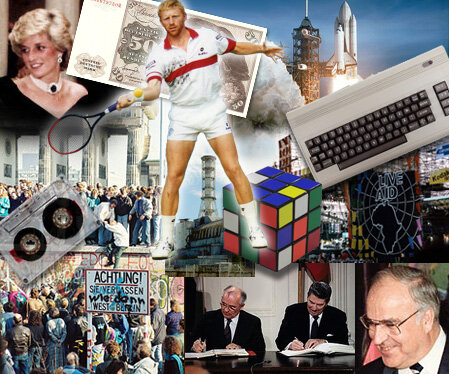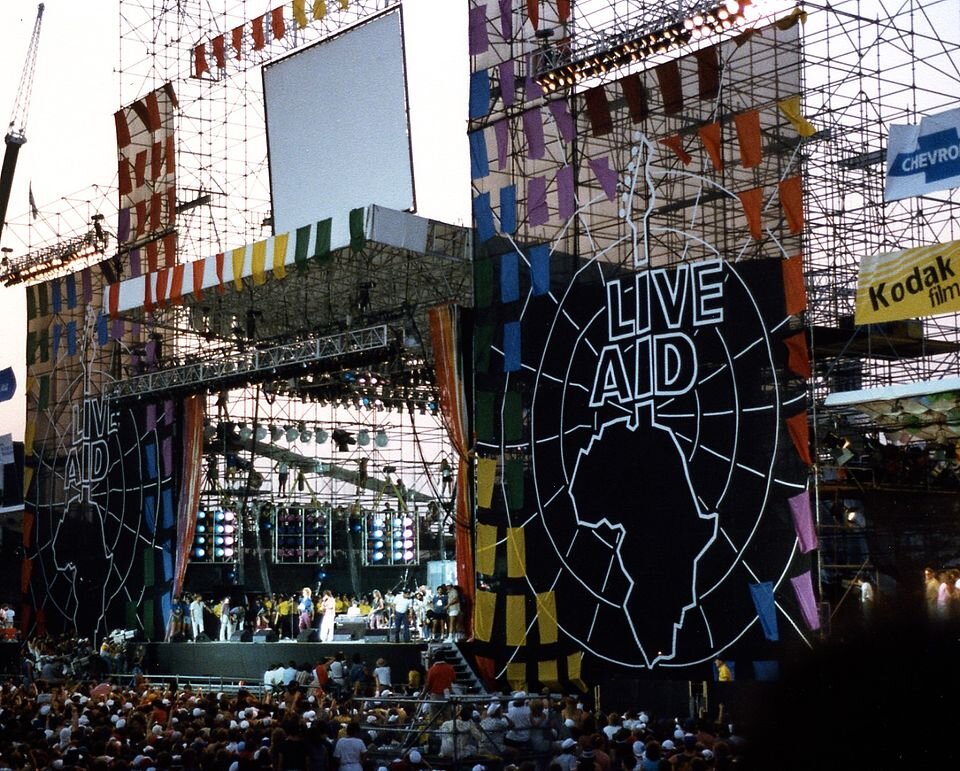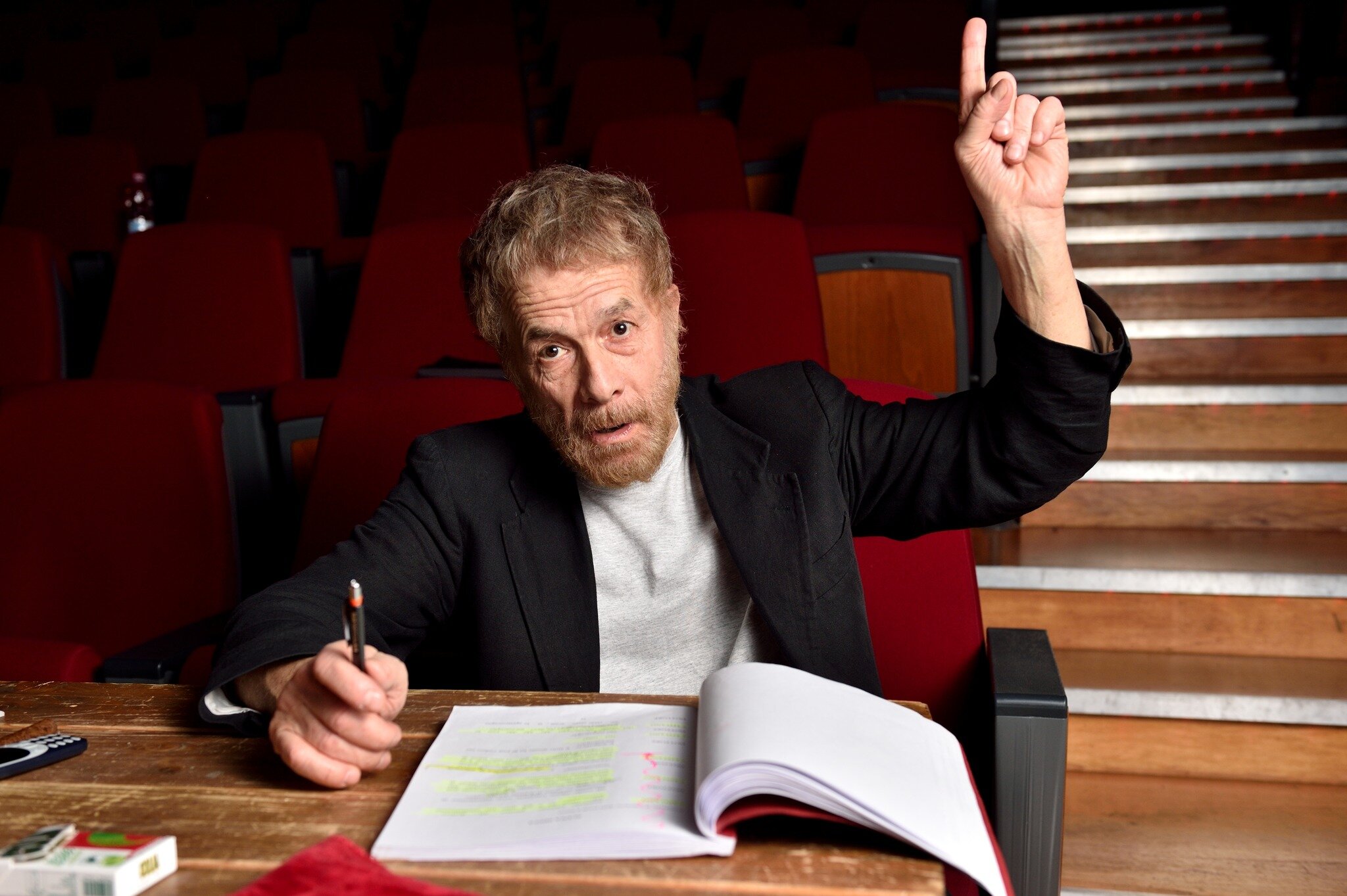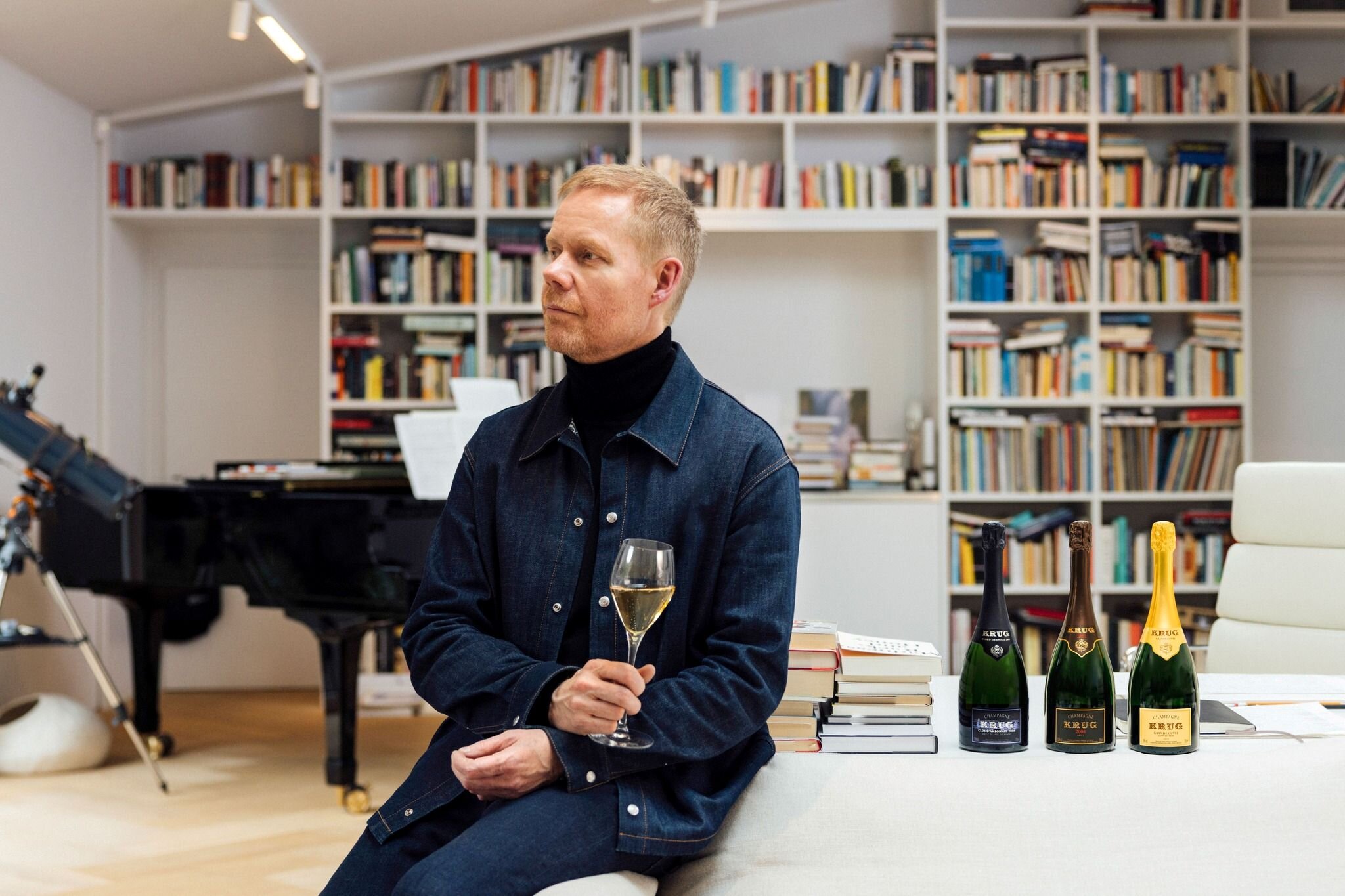
Quante volte abbiamo fantasticato, da appassionati, su quale concerto del passato avremmo voluto vivere in prima fila, con i polmoni pieni e le orecchie spaccate dalla gioia? Eppure, ce n’è uno che, più di tutti, racchiudeva l’illusione di un’utopia possibile. Il 13 luglio 1985, tra Londra e Filadelfia, andò in scena il Live Aid, una follia globale che riuscì a portare sul palco — in un solo giorno — il meglio del pop-rock mondiale per una causa che travalicava la musica: raccogliere fondi contro la carestia in Etiopia. Oltre 70 artisti, 16 ore di diretta, quasi due miliardi di spettatori incollati alla tv in 150 paesi. Numeri che oggi suonano mitologici, come se appartenessero a un’era geologica scomparsa.
Bob Geldof e Midge Ure si erano inventati qualcosa che oggi — parole dello stesso Geldof — sarebbe impossibile replicare. Non per mancanza di mezzi o di connessioni, che oggi sarebbero persino più potenti, ma perché è cambiato il tessuto culturale. È venuta meno quella disponibilità collettiva a credere che la musica potesse davvero smuovere le coscienze. Il fatto è che quella forma di ingenuità collettiva, quel “facciamo qualcosa” magari ingenuo ma sincero, si è spenta. Prosciugata da decenni di disimpegno travestito da ironia, da slogan vuoti, da like da salotto e da canzoni tutte uguali, progettate a tavolino come caramelle da consumare in due minuti.
Il Live Aid è stato, insieme, sogno e illusione. Un momento di fratellanza globale e una gigantesca messinscena rock. È stato un circo meraviglioso, eccessivo, contraddittorio. Qualcuno ci vide il potere salvifico dell’arte, qualcun altro — come Bob Dylan — ci sentì odore di ipocrisia. Eppure, in quell’arena titanica, tra Freddie Mercury che dominava Wembley con un solo gesto e Bono Vox che si lanciava in mezzo al pubblico infrangendo i tempi di scaletta, c’era qualcosa di autentico. Un desiderio di contare, di esserci, di schierarsi. Di dire: la musica può cambiare le cose, almeno un po’.
Oggi tutto questo sembra lontano. Troppo spesso la musica contemporanea si è trasformata in una vetrina dove l’impegno è solo scenografia e le emozioni si consumano come stories: veloci, decorative, dimenticabili. Ma proprio mentre sembriamo affogare nella liquefazione culturale del presente, qualcosa, nel sottosuolo, si muove. Forse non lo vedi in classifica, forse non passa dalle playlist automatiche di Spotify. Ma c’è un mondo musicale che ribolle, che non si accontenta. Ad esempio, lo dimostra Manuel Agnelli con Carne Fresca, un’iniziativa che sembra una chiamata alle armi per ragazzi che hanno ancora voglia di “dire qualcosa”, di rifiutare il format e abbracciare la forma. Un movimento diffuso e sotterraneo, fatto di canzoni con dentro la vita, non l’algoritmo.
E allora viene da pensare che, anche se il Live Aid non potrà più esistere nella forma di allora, forse può risorgere nella sostanza. In una generazione nuova che, stanca di luci fredde e dischi preconfezionati, inizia a sentire il bisogno di parole vere, di suoni imperfetti, di lotte condivise.
Perché oggi più che mai ci sarebbe bisogno di schierarsi. Senza mezze misure. Senza mezze voci. Bisognerebbe smentire Fabrizio De André — cosa che, ne siamo certi, lo renderebbe felice — e ritrovare quelle “voci potenti, lingue allenate a battere il tamburo”, quelle “voci potenti, adatte per il vaffanculo” che lui non sentiva più, nel deserto della fine degli anni Ottanta.
Recuperare quello spirito combattente, quella fame di realtà che ha animato il rock delle origini. Perché forse è proprio nel tornare a battere il tamburo — senza paura di risultare scomodi, politicizzati, fragili — che può nascere una nuova forma di musica impegnata. Una musica che non consola, ma sveglia. Che non decora, ma denuncia. E che, come allora, ha il coraggio di stare dalla parte giusta.
Quarant’anni dopo quel luglio del 1985, con Reagan alla Casa Bianca e Freddie sul palco, la fame è ancora lì, le guerre sono cambiate ma non sono scomparse. Sono più vicine anche se facciamo finta di no: alle porte dell’Europa, con la Russia che devasta l’Ucraina; nel cuore del Medio Oriente, con Gaza che continua a bruciare sotto i colpi della violenza cieca; e poi ci sono le guerre dimenticate, quelle che non fanno notizia, che devastano il Sahel, il Sudan, l’Etiopia. La sofferenza resta lì, solo più silenziosa, nascosta sotto il rumore di fondo del mondo.
Le illusioni si sono spente, ma forse è il momento di nuove visioni. Magari meno roboanti, ma più vere. Che partano dal basso, dai garage, dalle cantine, dai festival fuori circuito.
Perché, se il Live Aid fu, nel bene e nel male, l’apice del rock come megafono collettivo, oggi tocca a noi — pubblico, musicisti, critici, ascoltatori — decidere se tornare a essere società, come disse Geldof, oppure restare un algoritmo di individui stanchi.
Forty Years of Live Aid: The Time of Illusions, the Time to Begin Again
How many times have we, as music lovers, fantasized about which past concert we would have wanted to experience front row, lungs full and ears bursting with joy? And yet, there’s one that—more than any other—embodied the illusion of a possible utopia. On July 13, 1985, between London and Philadelphia, Live Aid took place: a global madness that managed to bring the best of the pop-rock world to the stage — all in a single day — for a cause that went beyond music: raising funds to fight famine in Ethiopia. Over 70 artists, 16 hours of live broadcast, nearly two billion viewers glued to their TVs in 150 countries. Numbers that today sound mythical, as if they belonged to a vanished geological era.
Bob Geldof and Midge Ure had come up with something that — in Geldof’s own words — would be impossible to replicate today. Not for lack of tools or connections, which are arguably stronger now than ever, but because the cultural fabric has changed. That collective willingness to believe that music could truly move consciences has faded. That form of collective naïveté, that “let’s do something”—maybe naïve but sincere—has been extinguished. Drained by decades of disengagement disguised as irony, by empty slogans, by living-room likes and songs all sounding the same, designed like candies to be consumed in two minutes.
Live Aid was both a dream and an illusion. A moment of global brotherhood and a gigantic rock spectacle. It was a magnificent circus — excessive, contradictory. Some saw it as the redemptive power of art, others — like Bob Dylan — smelled hypocrisy. And yet, in that titanic arena, between Freddie Mercury commanding Wembley with a single gesture and Bono Vox diving into the crowd, breaking the strict timeline, there was something real. A desire to matter, to be present, to take a stand. To say: music can change things, even just a little.
Today all this feels distant. Too often, contemporary music has turned into a showcase where activism is just set dressing, and emotions are consumed like Instagram stories: quick, decorative, forgettable. But even as we seem to drown in the cultural liquefaction of the present, something is stirring underground. You might not see it on the charts, it may not show up on Spotify algorithmic playlists. But there's a bubbling music scene that refuses to settle. Just look at Manuel Agnelli’s Carne Fresca (“Fresh Meat”), an initiative that feels like a call to arms for young people who still want to “say something,” to reject the format and embrace the form. A diffuse, underground movement made of songs filled with life, not algorithms.
And so one begins to think that, even if Live Aid can never exist in the same form again, maybe it can be reborn in essence. In a new generation, tired of cold lights and prefabricated records, starting to crave real words, imperfect sounds, shared struggles.
Because now more than ever, we need to take a stand. No half-measures. No half-voices. We should prove Fabrizio De André wrong — something that, surely, would make him happy — and recover those “powerful voices, tongues trained to beat the drum,” those “powerful voices, suited for saying fuck off,” that he no longer heard in the desert of the late 1980s.
Let’s reclaim that fighting spirit, that hunger for reality that animated the origins of rock. Because maybe it’s precisely in beating the drum again — unafraid of being inconvenient, politicized, fragile — that a new form of committed music can be born. A music that doesn’t soothe, but awakens. That doesn’t decorate, but denounces. And that, like back then, has the courage to stand on the right side.
Forty years after that July of 1985, with Reagan in the White House and Freddie on stage, famine is still here, wars have changed but not disappeared. They’re closer, even if we pretend they’re not: at Europe’s doorstep, with Russia devastating Ukraine; in the heart of the Middle East, with Gaza still burning under the weight of blind violence; and then the forgotten wars, the ones that never make headlines, devastating the Sahel, Sudan, Ethiopia. The suffering remains — just quieter, hidden beneath the world’s background noise.
The illusions have faded, but maybe it’s time for new visions. Less flashy, perhaps, but more truthful. Born from the bottom up, from garages, basements, off-circuit festivals.
Because if Live Aid was — for better or worse — the peak of rock as a collective megaphone, today it’s up to us — audiences, musicians, critics, listeners — to decide whether we want to become a society again, as Geldof once said, or remain just an algorithm of tired individuals.
Photo credits
Squelle, CC BY-SA 3.0 <https://creativecommons.org/licenses/by-sa/3.0>, via Wikimedia Commons
Montage by SFCOLLAGE (talk) created using the following images:File:1980s replacement montage02.PNG: A derivative work by CatJar, from a variety of images credited above.File:BerlinWall-BrandenburgGate.jpg: Heitor C. Jorge.File:Boris Becker.jpg: Flickr-User mandj98.File:Bundesarchiv B 145 Bild-F076604-0021, Frankreich, Staatsbesuch Bundeskanzler Kohl.jpg: Lothar Schaack.File:Lady Diana.jpg: Inge Habex.File:Live Aid at JFK Stadium, Philadelphia, PA.jpg: Squelle.File:Rubicks cube IMG 5429.jpg: Rama., CC BY-SA 3.0 <https://creativecommons.org/licenses/by-sa/3.0>, via Wikimedia Commons



